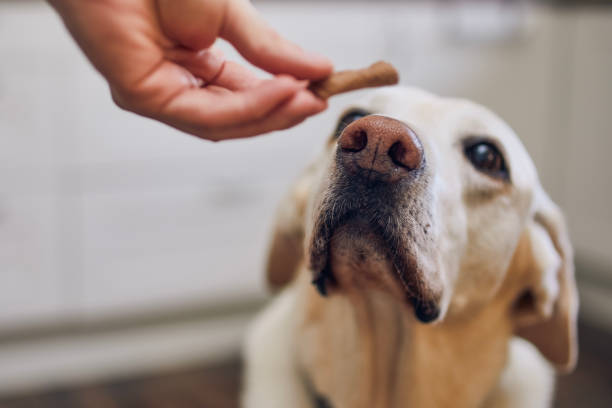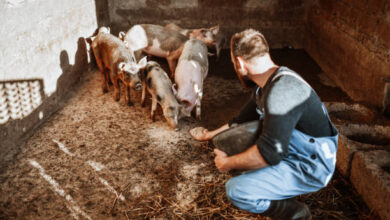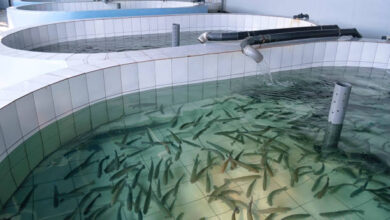Best Dog Food for Anal Gland Issues: Top Choices and Dietary Tips

Best Dog Food for Anal Gland Issues: Top Choices and Dietary Tips
Anal gland issues in dogs are a common problem that can cause significant discomfort for our furry friends. These issues often manifest as scooting, licking, and general irritation. While various factors contribute to anal gland problems, diet plays a crucial role in managing and alleviating these issues. In this article, we will explore the Best Dog Food for Anal Gland Issues, discuss key ingredients to look for, and provide additional dietary tips and natural remedies to support your dog’s well-being.
Read Also: Can Food Cause Anal Gland Issues in Dogs? A Guide
Understanding Anal Gland Issues in Dogs
- What Are Anal Glands?
Anal glands, also known as anal sacs, are small glands located on either side of a dog’s anus. They produce a smelly secretion that dogs use for marking territory and identifying each other. In a healthy dog, these glands empty naturally during defecation. However, various issues can lead to impaction, infection, or abscesses.
- Common Causes of Anal Gland Problems
Several factors can cause anal gland issues in dogs, including:
– Diet: Low-fiber diets can result in soft stools that don’t exert enough pressure on the anal glands to empty them naturally.
– Obesity: Overweight dogs are more prone to anal gland problems due to decreased muscle tone.
– Genetics: Some breeds, such as small and toy breeds, are more susceptible to anal gland issues.
- Symptoms to Watch For
Signs that your dog may be experiencing anal gland problems include:
– Scooting or dragging their rear end on the ground
– Excessive licking or biting at the anal area
– Swelling or redness around the anus
– A foul odor coming from the rear end
– Discomfort when sitting
Read Also: What Is Chicken Meal in Dog Food? Its Benefits and Risks
Best Dog Food for Anal Gland Issues
- High-Fiber Dog Foods
High-fiber dog foods are excellent for promoting healthy bowel movements, which can help naturally empty the anal glands. Some recommended high-fiber dog foods include:
– Royal Canin Fiber Response Dry Dog Food
– Hill’s Prescription Diet w/d Digestive/Weight/Glucose Management Dog Food
– Wellness CORE RawRev High-Protein, Grain-Free
- Grain-Free Options
Grain-free dog foods can be beneficial for dogs with sensitivities or allergies that might contribute to anal gland issues. Top grain-free options are:
– Blue Buffalo Wilderness High Protein Grain-Free
– Taste of the Wild High Prairie Canine Recipe
– Merrick Grain-Free Texas Beef & Sweet Potato
- Limited Ingredient Diets
Limited ingredient diets help minimize the risk of allergies and sensitivities that could exacerbate anal gland problems. Some excellent choices include:
– Natural Balance L.I.D. Limited Ingredient Diets
– Blue Buffalo Basics Limited Ingredient Diet
– Canidae PURE Limited Ingredient Grain-Free
- Raw and Fresh Dog Foods
Raw and fresh dog foods provide high-quality, natural ingredients that support overall health, including anal gland function. Consider these options:
– The Farmer’s Dog Fresh Dog Food
– Ollie Fresh Dog Food
– Primal Freeze-Dried Dog Food
- Prescription Diets
For dogs with severe or chronic anal gland issues, prescription diets formulated by veterinarians may be necessary. Options include:
– Hill’s Prescription Diet i/d Digestive Care
– Royal Canin Veterinary Diet Gastrointestinal Low Fat
– Purina Pro Plan Veterinary Diets EN Gastroenteric Formula
Read Also: How Much Does It Cost to Cremate a Dog? Dog Cremation
Ingredients to Look for in Dog Food
- High-Fiber Ingredients
Fiber is crucial for firm stools that help express the anal glands. Look for ingredients such as:
– Pumpkin
– Sweet potatoes
– Beet pulp
– Brown rice
- Natural Ingredients
Choosing dog food with natural, whole ingredients ensures better nutrition and fewer fillers. Key ingredients to look for are:
– Real meat (chicken, beef, lamb)
– Vegetables (carrots, peas, spinach)
– Fruits (blueberries, apples)
- Avoiding Fillers and Artificial Additives
Fillers and artificial additives can cause digestive issues and exacerbate anal gland problems. Avoid ingredients such as:
– Corn, wheat, and soy
– Artificial colors, flavors, and preservatives
Additional Dietary Tips for Managing Anal Gland Issues
- Importance of Hydration
Ensure your dog is well-hydrated, as water aids in digestion and stool formation. Always provide fresh, clean water.
- Feeding Schedule and Portion Control
Establish a consistent feeding schedule and avoid overfeeding to maintain a healthy weight, reducing the risk of anal gland problems.
- Incorporating Probiotics
Probiotics support a healthy digestive system, which can improve stool quality and overall anal gland health. Consider probiotic supplements or foods with added probiotics.
Natural Remedies and Supplements
- Pumpkin and Other Fiber Supplements
Adding pureed pumpkin or fiber supplements to your dog’s diet can significantly improve stool consistency and help express the anal glands naturally.
- Omega-3 Fatty Acids
Omega-3 fatty acids, found in fish oil, reduce inflammation and support overall health, including skin and gland health.
- Probiotics and Digestive Enzymes
Probiotics and digestive enzymes enhance gut health and can be particularly beneficial for dogs with recurrent anal gland issues.
When to Consult Your Veterinarian
- Recognizing When Dietary Changes Aren’t Enough
If your dog’s anal gland issues persist despite dietary changes, it’s essential to consult your veterinarian for further evaluation and treatment options.
- Professional Treatment Options
Your veterinarian may recommend professional treatments such as manual expression of the glands, antibiotics for infections, or surgical intervention in severe cases.
Conclusion
Choosing the right dog food for anal gland issues can make a significant difference in your dog’s comfort and health. By selecting high-fiber, natural, and grain-free options, you can help manage and alleviate anal gland problems. Remember to incorporate additional dietary tips and natural remedies to support your dog’s overall well-being.
Have you tried any of these dog foods for anal gland issues? Share your experiences in the comments below and subscribe to our newsletter for more pet health tips!




